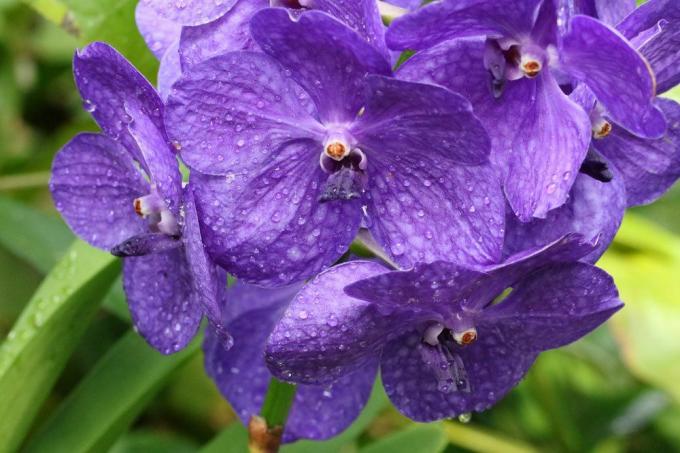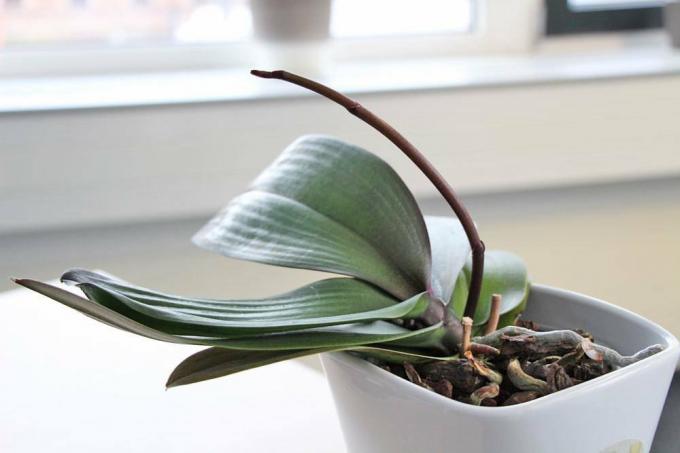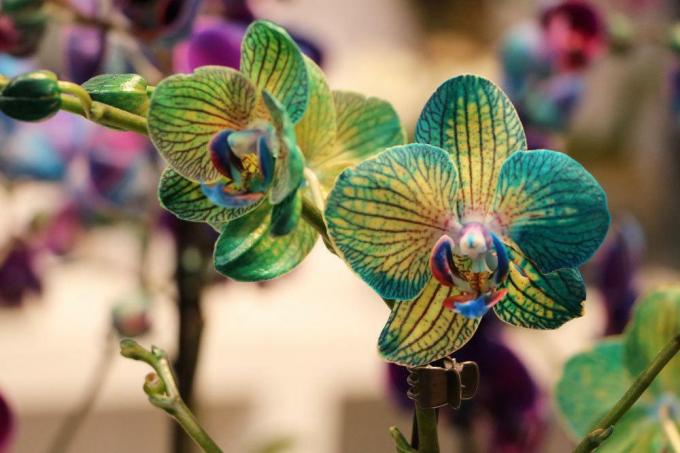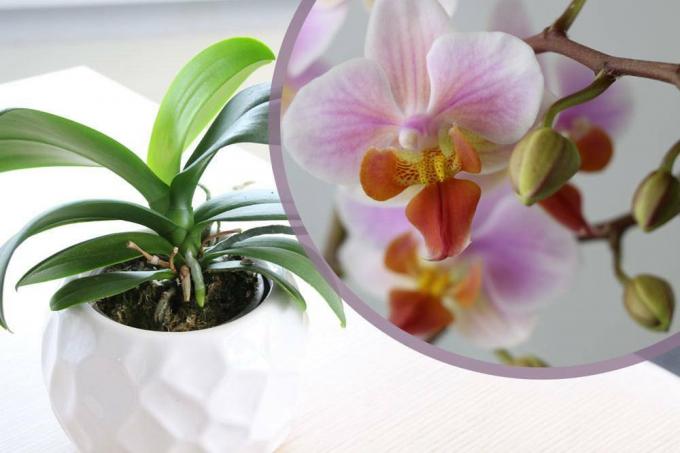
table of contents
- Loss of buds and flowers
- causes
- Beginning of the break
- Lack of light
- cold temperatures
- humidity
- Change of location
- Drought and waterlogging
- Wrong substrate
- Fresh fruit
- Extreme exposure to the sun
- Pest infestation
These noble beauties have been captivating people for over 2,500 years. Today they are spread all over the world. For many enthusiasts, the orchid is considered the "queen of flowers". Usually these plants are quite easy to care for. For some time now, they have also found their way into many living rooms. Orchids are often found there on window sills, but not everyone likes this place. In unfavorable conditions and incorrect care, the flowers can quickly dry out and eventually fall off.
Over the millennia, they were not only used as decoration, but also as a remedy and aphrodisiac, but orchids also played an important role in superstition. Over the past 150 years, breeding has resulted in over 100,000 different hybrids, including the Phalaenopsis, Cattleya, Dendrobium and Cymbidium.
Loss of buds and flowers
Why do orchids lose their buds and flowers?
Usually the orchids with their beautiful, filigree flowers delight for a relatively long period of time before they dry out and finally fall off. Occasionally, however, it can also happen that the flowers wilt a short time after their appearance or even unopened buds and are ultimately thrown off. There can be various causes for this, from normal blooming to care errors and pest infestation. Before the appropriate aid measures are taken, it must be clarified in detail why this flower wilt occurs.
causes
- beginning break
- Lack of light
- cold temperatures
- dry heating air / lack of humidity
- Change of location
- dryness
- Waterlogging
- wrong substrate
- fresh fruit nearby
- extreme exposure to sunlight
- Pest infestation
If all flowers dry at the same time, one can usually Care errors can be assumed. Sometimes the flower bases appear in a shriveled state, the buds do not open and dry up prematurely. A bud fall is also due to the fact that there was no optimal care.
Beginning of the break
With the break one goes natural wilt along with the shoot tips always wilting last. As a result, the dried flowers fall off and a rest period begins. This is usually determined by the plant itself, when it starts and ends. Sometimes it can take several months for the flowers to grow again. Special care is required during this time.
What to do?
- Put the plant in a cooler location
- Less watering, but the substrate must not dry out
- Stop fertilizing completely
If new shoots then form, the rest period is over and the orchid must then receive normal care again.
Lack of light
In their natural environment the orchid grows as Epiphytes (Epiphytes). With its roots it clings to the branches of tall trees or rocks in order to get as close as possible to the light. For this reason, these plants must also be with us bright stand. Especially in autumn, when the days are getting shorter, there is often a lack of light. This means that photosynthesis can no longer be carried out by the plants. The result is that the existing flowers wither, fall off quickly and hardly any new buds form.
What to do?
- Look for a bright location, right by the window
- In winter, from November to the beginning of March, give a seat at the south window
- In spring and summer, choose a location by the east or west window (morning and evening sun)
- Protection from direct sunlight
- Additional installation of daylight lamps or LED plant lamps directly above the flowers
- Equip existing energy-saving lamps with reflectors
- Use of daylight lamps and fluorescent tubes of light color 865
- Lighting duration must be at least eight hours
tip: There must be sufficient light for healthy growth all year round, but no direct sunlight.
cold temperatures
Orchid loves staying warm
These noble beauties love a warm place with constant temperatures, as they are used to from their home. Constant temperature fluctuations of only 5 ° C are enough to shed flowers. Maintenance problems can arise in winter in particular. Leaky windows or too much ventilation can quickly lead to the flowers falling off. In addition, a location directly above the heater won't adjourn really well. Here the heating air rises and causes Draftsto which an orchid is also very sensitive. Even if it is located on the windowsill, regular ventilation can cause damage very quickly. The plant then suffers cold shock due to draft. Ultimately, it also loses its ability to flower here. Caution is also advised when buying during winter, because problems can also arise here, and the flowers can fall off prematurely.
What to do?
- Bright location with constant temperatures between 18 ° C and 21 ° C
Select - No prolonged temperatures below 15 ° C
- Attach a thermometer near the orchid to check the temperature
- Avoid location above heating
- No draft
- Do not tilt the window directly at the location of the orchid for ventilation
- When buying during winter, transport in transparent boxes or wrap thickly with newspaper
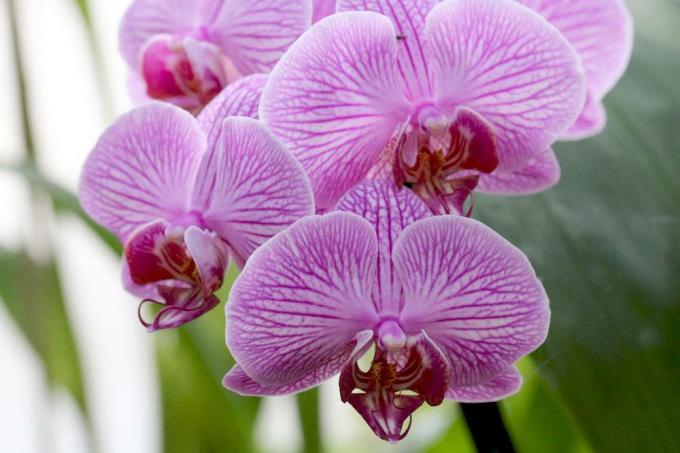
tip: If there is no formation of buds or flowers, however, a temperature reduction during the night of 5 ° C over a period of 4 to 6 weeks is advisable. This stimulates the growth of flower stalks.
humidity
Orchids come from regions with high humidity. The daily rainfall in the rainforests creates a warm and humid climate, which the plants want on the windowsill. You will feel comfortable with a relative humidity between 40 and 60%. A drop below 40% or an increase above 80% should always be avoided. Otherwise the plants would react with a wide variety of symptoms, including the shedding of flowers.
What to do?
- Avoid relocating
- Fill the coaster with expanded clay and water
- Spray daily with lukewarm, lime-free water
- Put the filled water bowls on the heater in winter
- Installation of electronic humidifiers in the immediate vicinity
Change of location
As a rule, orchids are considered special true to location. A one-time relocation does not affect the plants. However, a constant change of location is always associated with stress and the orchids react with you Shedding of buds and flowers as they are unable to quickly adapt to the new conditions get used to.
tip: A change of location should therefore always only take place after the flowering cycle.
Drought and waterlogging
The individual orchid cultivars also have different water requirements. A prolonged drought draws you Nutritional deficiency after yourself. The first signs are sagging and shriveled leaves, as well as dried up flowers and buds. If the aerial roots are still green and plump, then there is still enough moisture. However, if they appear shiny silver, there is a lack of water.
On the other hand, watering too much results in waterlogging and the roots begin to rot. They are then brown and mushy. The plant may still be saved, but if all the roots are infected, the situation is hopeless.
What to do?
- Watering with room warm, soft water, if possible rainwater
- Do not leave any water in the pots, avoid waterlogging
- The bark substrate must be dry between watering
- In the summer, dip the root ball once a week until no more air bubbles rise, then let the water drain well
- Water more sparingly in winter
- In case of waterlogging, remove rotten roots, repot in new substrate and do not water for 8 to 10 days, just spray with water.
tip: Special cachepots are available in specialist shops. Here the culture pot stands over a pedestal. The bottom of the pot must be filled with water. This avoids waterlogging. The evaporated water clouds leaves, buds and flowers.
Wrong substrate
Most orchids live and form as epiphytes Aerial roots. With these, moisture and nutrients are absorbed from the air. It would not exist in normal potting soil and the flowers would dry up because the roots cannot guarantee a water supply.
What to do?
- Repotting in a special substrate made of pine soil, fine-grain humus, expanded clay,
Lava granules, charcoal ash and sphagnum - Water and fertilize 1 to 2 days beforehand
- Repot the plant without pulling, carefully remove old substrate
- Cut off damaged roots
- Put the expanded clay in a pot as drainage
- Insert the orchid with a twisting motion and then the substrate in portions
- Water for the first time after five days, first fertilization after four weeks
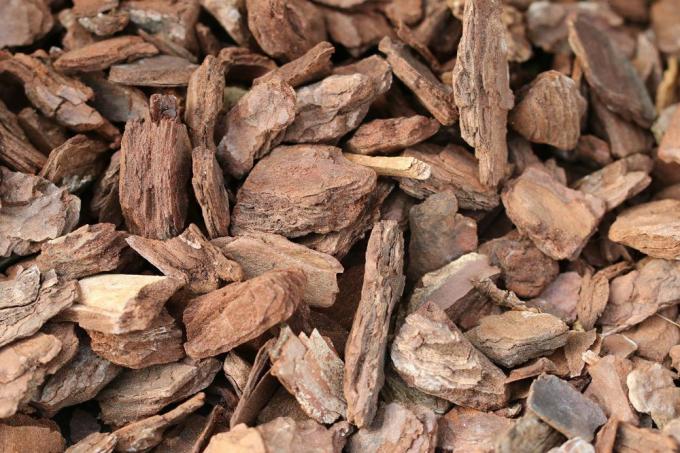
Fresh fruit
Ripening fruit such as pears or apples but the ripening gas Ethylene away. This accelerates the aging process of the flowers. They dry up and fall off. A sweet smell indicates the presence of the gas.
tip: There should be a distance of at least one meter to orchids or the fruit basket should be completely removed from the room. After a few days, the aging process will stop.
Extreme exposure to the sun
Direct sunlight leads to rapid evaporation of the water from the leaves. There is a lack of water, the flowers age prematurely, dry up and are thrown off.
What to do?
- Avoidance of blazing midday sun
- Use of semi-transparent curtains and blinds
Pest infestation
Even orchids are not spared from sucking and biting pests. Its presence leads, among other things, to the weakening of the flowers. They wither and fall off.
What to do?
- Isolate affected plants
- Remove aphids with a damp cloth
- Then spray the leaves and flowers with soft soap solution
- Dab the mealybugs and mealybugs repeatedly with an alcohol-soaked cotton swab
- Alternatively, spray leaves with a mixture of 10 ml spirit, 1 liter of water and 1 drop of washing-up liquid
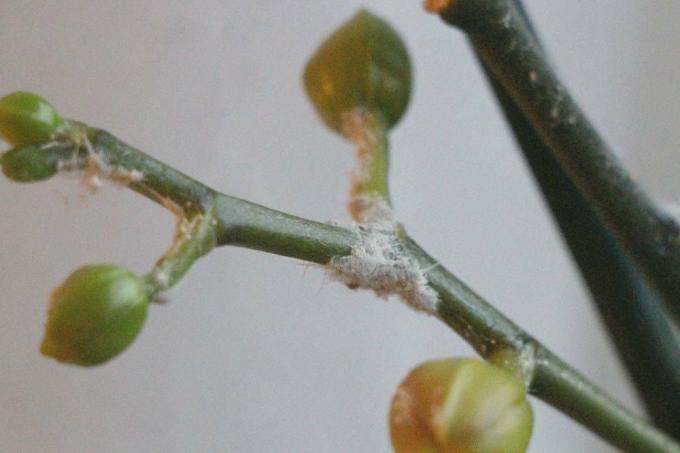
tip: Australian ladybirds can be used for natural control when orchids are in closed rooms.

